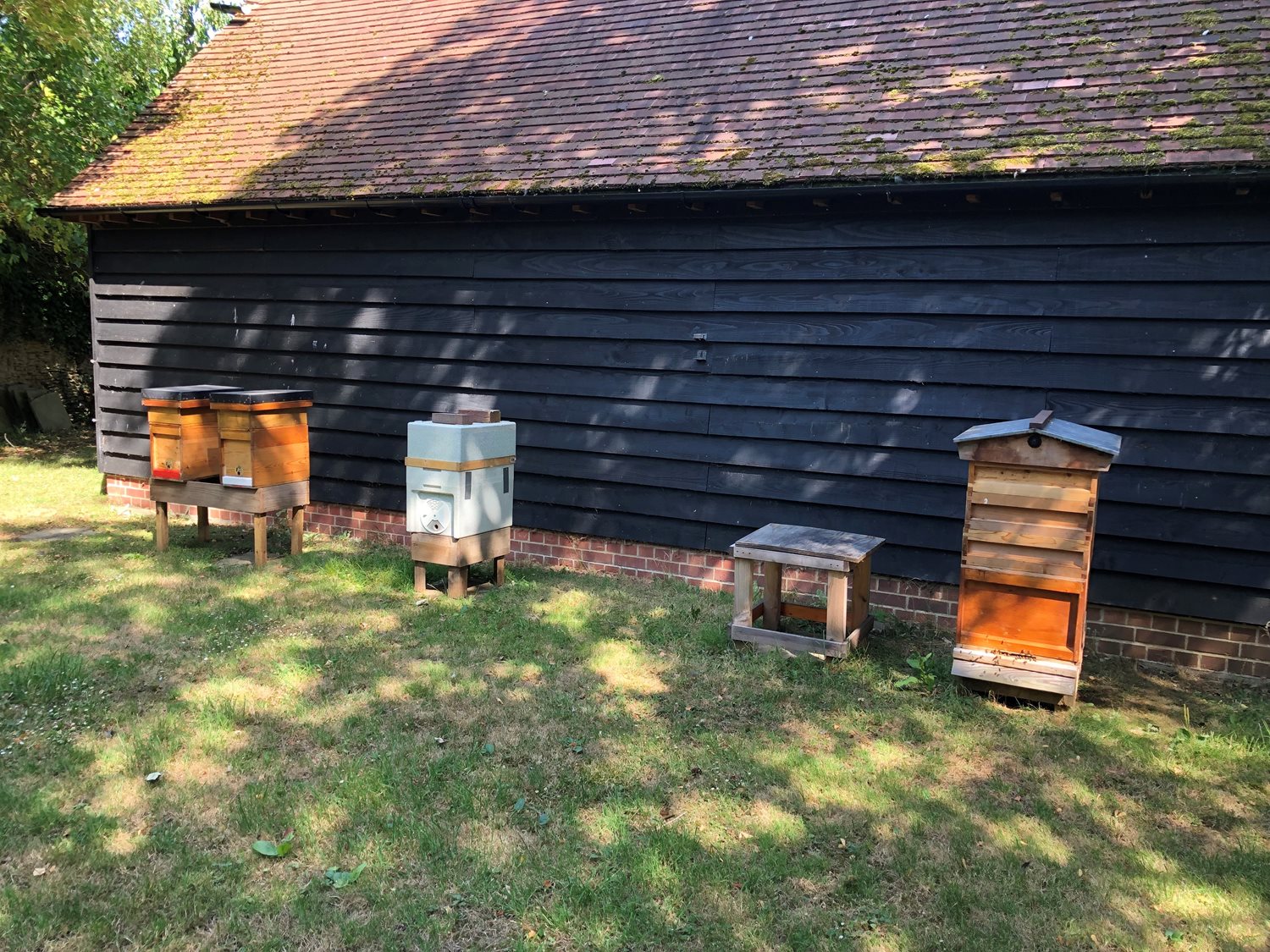Bee Blog August 2022
This month's update from local beekeeper Gerald Bushby
Trying to develop a new colony has been a little like waiting for a bus, you hope that one will arrive, you wait and wait and then two arrive together.
At the end of last month I had made a second split from my remaining hive in an attempt to produce another colony by encouraging the bees to produce a queen cell. My first attempt was unsuccessful so I had tried again. This time after waiting for the bees to hopefully produce one queen cell, five were produced at the same time. When I carried out an inspection about eight days after the split I could see at least five sealed queen cells.
What normally happens is that as soon as the first queen hatches she kills the developing queens in the remaining queen cells. It's quite brutal out there. There can only be one queen in a colony. Its kill or be killed.
It seemed to me that my chances of producing a new colony could be increased if, instead of leaving all of the queen cells in the nucleus, where the first to emerge would kill the others, I could remove two of the five cells and make up two further nucleus colonies by placing one queen cell in each. To do this however I would have to remove two further frames of worker bees from the main colony to look after the new queens when they hopefully hatched, further weakening the main colony.
Looking into the main colony I found that they had been increasing greatly in numbers since my last inspection. The downside of removing two more frames was that there would be less bees to produce honey in the main hive. Whilst looking through the framed I luckily found the queen and was able to isolate her giving me an opportunity to choose any of the frames to remove without the usual fear of the queen being on the frame I took out. I decided to made up two more nucleus colonies. This gave me a total of three nucleus colonies that may successfully produce a new queen. I added feed to each nucleus and I have seen bees entering and leaving so I have done as much as I can do for the moment. If only one nucleus produces a queen I will be very pleased.
I have been very keen to look into the three nucleus colonies to check on progress but I am resisting the temptation as I do not want to do anything to disturb the bees that may damage the chances of success. I will not know for sure if any have been successful until I see new worker brood being produced and this will still take some time yet. The queen has to hatch from her cell, be mated and start producing fertilised eggs and all this takes some time.
Luckily the weather is fine and warm and the bees in the main colony have been laying down a lot of nectar and turning it into honey. Even though I have now removed a total of five frames since the beginning of the season there is still a lot of activity every day and I have now had to add further supers, now a total of three, as they were being filled up very rapidly. If there is a good nectar flow the bees can fill a super in a week.
I will probably wait until the beginning of August to take off the honey from the main colony allowing the colony a good period of time to replenish its supplies in the main brood chamber during the autumn to take them through the winter.
My photograph this month shows the three nucleus colonies on the left and the main colony with three supers on the right. If you look closely at the entrance to the main colony you can see a lot of bee activity at the entrance, another good day. The bees seem to like this exceptionally hot weather.
